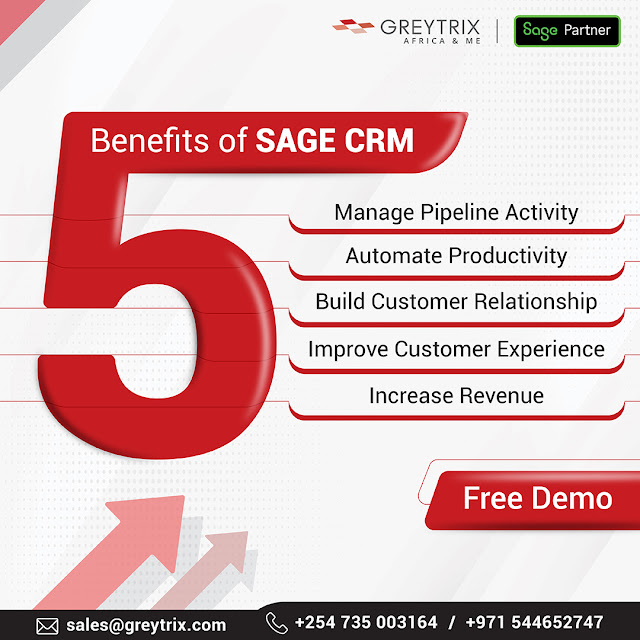How CRM Enhances Collaboration Between Sales and Marketing Teams
A well-implemented CRM system acts as a central hub for data, communication, and strategy alignment, fostering better collaboration between sales and marketing teams.
Here's how CRM software bridges the gap and enhances team cooperation:
1. Centralized Data Access
One of the primary benefits of a CRM system is its ability
to consolidate customer data in a single location. Both sales and marketing
teams can access detailed customer profiles, purchase histories, preferences,
and interactions. This centralized access eliminates duplication of efforts and
ensures that both teams work with accurate, real-time information.
For instance, the marketing team can tailor campaigns based
on insights into customer behavior, while the sales team can prepare
personalized pitches using the same data. This alignment reduces confusion and
enhances the customer experience.
2. Improved Lead Management
CRM systems streamline the lead management process, ensuring
that marketing efforts effectively generate qualified leads and that sales
teams are equipped to convert them. Marketing teams can use CRM tools to score
and segment leads based on engagement levels, demographics, or other criteria.
Once leads meet the pre-defined criteria, they are
seamlessly handed over to sales teams for follow-up. This structured approach
minimizes friction and ensures no opportunities are lost due to poor
communication.
3. Enhanced Communication Channels
CRM platforms often come with integrated communication tools
such as email, messaging, and shared calendars. These features facilitate
real-time collaboration between sales and marketing teams. For example:
- Marketing
teams can share campaign details, such as email templates or promotional
offers, directly with sales teams.
- Sales
teams can provide feedback on campaign performance, such as which leads
are engaging most with the content or offers.
This feedback loop enables both teams to fine-tune their
strategies for better results.
4. Unified Metrics and Reporting
A CRM system provides unified dashboards and reporting tools
that track key performance indicators (KPIs) for both sales and marketing
activities. Teams can analyze metrics such as lead conversion rates, customer
acquisition costs, and sales pipeline progress within the same platform.
By having a shared understanding of performance data, both
teams can align their goals and work towards common objectives. This
transparency reduces potential conflicts and fosters a spirit of collaboration.
5. Seamless Campaign Execution
CRM systems support end-to-end campaign management, from
planning and execution to analysis. Marketing teams can create campaigns
directly within the CRM, track engagement, and assess their impact on lead
generation.
Sales teams can then use the CRM to follow up on
campaign-generated leads, referencing campaign details to maintain consistency
in messaging. This seamless workflow ensures that marketing efforts translate
into tangible sales outcomes.
6. Personalized Customer Engagement
CRM systems empower both teams to deliver personalized
experiences at every touchpoint. Marketing can design targeted campaigns based
on customer preferences, while sales teams can use CRM insights to tailor their
interactions.
For example, a marketing campaign might inform customers
about a new product, while the sales team follows up with tailored
recommendations based on previous purchases. This synchronized approach boosts
customer satisfaction and loyalty.
7. Facilitating Feedback and Continuous Improvement
CRMs enable teams to track the entire customer journey,
providing valuable insights into what works and what doesn’t. Marketing teams
can learn which campaigns are driving the most leads, and sales teams can
identify which approaches are most effective in closing deals.
By sharing this feedback within the CRM, both teams can
collaborate to refine their strategies, ensuring continuous improvement and
better alignment over time.
Conclusion
In today's competitive business environment, collaboration
between sales and marketing is no longer optional; it's essential. A CRM system
serves as the backbone of this collaboration, providing the tools and data
needed for both teams to work in harmony.
By centralizing information, improving communication, and
aligning goals, CRM systems eliminate the traditional silos between sales and
marketing. This leads to improved efficiency, a better customer experience, and
ultimately, greater business success.
Investing in a robust CRM solution is not just a
technological upgrade—it’s a strategic move towards fostering collaboration,
driving revenue, and achieving sustainable growth.
For more information on Customer Relationship Management System, contact us at sales@greytrix.com
or visit Greytrix Africa Ltd.




Comments
Post a Comment